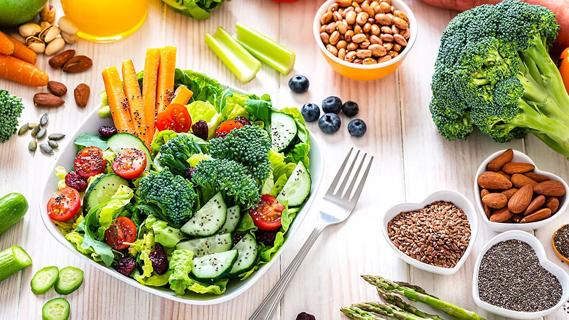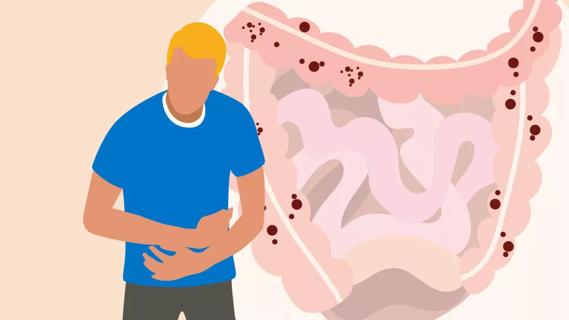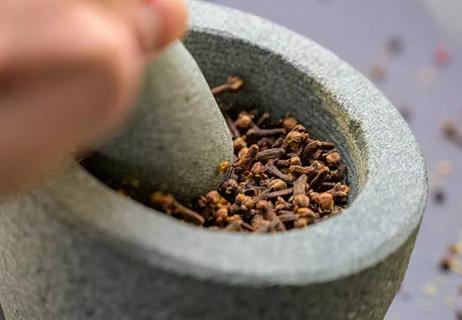These bright and vibrant plant compounds can benefit your health in many ways

You’ve probably heard the saying, “Add some color to your plate” when it comes to a healthy diet.
Advertisement
Cleveland Clinic is a non-profit academic medical center. Advertising on our site helps support our mission. We do not endorse non-Cleveland Clinic products or services. Policy
Well, if your body’s health was a vibrant tapestry, flavonoids would be just one of the many threads to choose from. These plant compounds can be found in everything from common grocery store fruits and veggies to flowers, herbs and spices. In fact, the chemical is what’s responsible for the bright color in many popular produce.
Dietitian Bailey Flora, RDN, LD, explains what flavonoids are, their subgroups and how your body may benefit from them.
OK, back to high school biology for a second. Flavonoids are a type of phytochemical or plant chemical that are widely distributed in the plant kingdom. They create the vibrant colors of many fruits, vegetables and flowers, and have been found to have a variety of health benefits.
“Flavonoids aren’t really digested or absorbed the same as other nutrients like protein or carbohydrates,” explains Flora. Instead, our gut bacteria break down flavonoids and use them to benefit different parts of our bodies, such as providing antioxidant and anti-inflammatory properties.
Flavonoids are further grouped into different subclasses based on their own chemical structure and how they’re broken down. This is why the type of flavonoid you’re getting will depend on the foods you’re eating. (More on that in a moment).
Advertisement
“The color of the food will actually give you a hint of what subgroup of flavonoid it is,” notes Flora.
Research has shown that flavonoids have a range of health benefits, including antioxidant, anti-inflammatory and anti-cancer properties. They’ve been linked to a reduced risk of chronic diseases such as cardiovascular disease, as well as improved cognitive function.
Here are some of the known benefits of flavonoids:
A research study from 2011 found that flavonoids play an important role in fighting cancer.
According to Flora, flavonols — a type of flavonoid — can help with promoting the cell life cycle and even discouraging the growth in some cancers.
Your heart can benefit from a flavonoid-rich diet as well. Specifically, they’ve been shown to help with relieving symptoms of hypertension (high blood pressure). A 2021 study found an association between lower blood pressure and a higher intake of flavonoid-based foods like apples, berries and pears. This is largely why you’ll notice a lot of the flavonoid-rich fruits in the Mediterranean diet, which is known for benefiting your heart.
“They do this by helping with blood vessel relaxation and preventing blood clots from forming,” states Flora.
Flavonoids are also linked to promoting brain health, decreasing neuro-inflammation and improving blood flow to the brain. A 2022 review found that having a flavonoid-rich diet was associated with higher cognitive and memory function, especially for aging adults.
There isn’t any established recommended daily intake or daily value for flavonoids. But research suggests that a higher intake of flavonoids may have health benefits, and consuming a diet rich in flavonoid-containing foods is generally recommended for overall health and well-being. The amount of flavonoids needed in your diet will vary depending on individual factors such as your age, sex and overall health status.
The best way to get flavonoids into your system is directly from food and drink sources. Foods that are rich in flavonoids include berries, citrus fruits, tea, wine, onions and cocoa.
Here’s what you should eat or incorporate into your diet based on some of the well-known subgroups of flavonoids:
Anthocyanins are the specific type of flavonoids that give most flowers their vibrant color — specifically those with a purple hue. Similarly, they’re found in the skin of most berries, thus giving them their shades of purple, pink and red.
Advertisement
You can find these in foods like:
High in antioxidant power, this flavonoid family holds stock over most citrus fruits you know and love.
Find them in foods like:
These types of flavonoids are best known for having high antioxidant properties and can help with cardiovascular health.
These can be found in foods like:
Along with being responsible for the vibrant pigments in blue and white flowers, flavones are mostly found in different types of herbs as well as some vegetables. So, when you’re looking to refill your spice rack again, look for the ones that are high in these types of flavonoids to get some of their anti-inflammatory benefits.
These can be found in ingredients like:
Finally, you can get isoflavones from your favorite soy products. Reach for recipes with tofu or edamame.
As you can see from the lengthy list above, you can get more than enough flavonoids from what’s in your fridge and pantry. While there are supplements out there touting to fill the gap for flavonoids, it’s better to stick to getting them through delicious dishes and recipes.
Advertisement
“I always recommend choosing food over supplements,” advises Flora. “The more that you can include some of these plant-based flavonoids through dense foods, it’s just going to provide that extra benefit.”
Advertisement
Learn more about our editorial process.
Advertisement

These typically colorful plant-based substances provide various health benefits that help protect you from disease

If you have IBD, there are roughly nine food types that might contribute to inflammation flare-ups

Cloves contain eugenol, which may have anti-inflammatory and antibacterial properties

Pain relief and nausea reduction are just two of this root’s many positive attributes

Diet and exercise are your best first steps

The foods you eat (and avoid) impact inflammation inside of your body

How watching what you eat can help control this common condition

Adding these simple foods to your diet can make a big difference

Type 2 diabetes isn’t inevitable with these dietary changes

Applying a hot or cold compress can help with pain